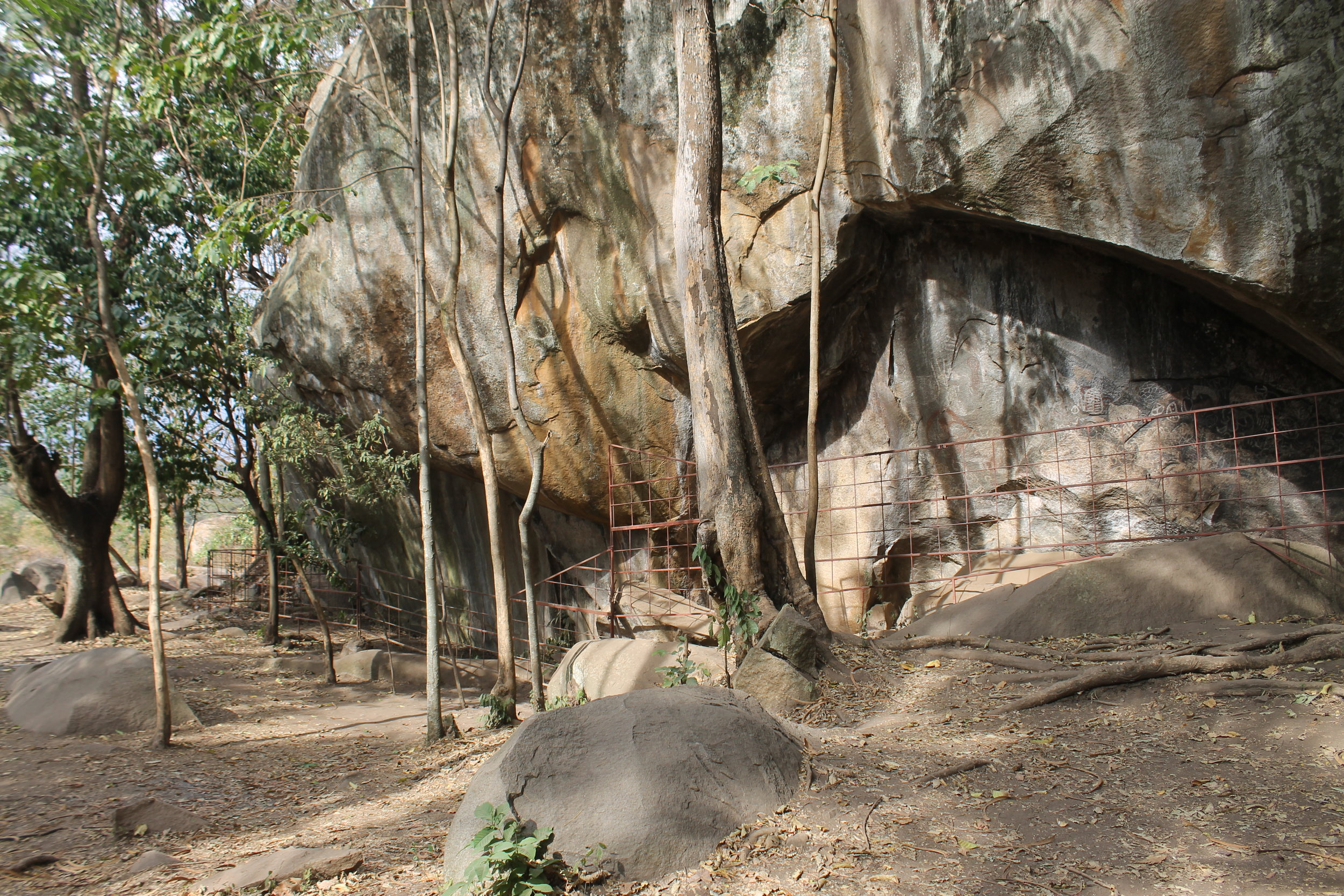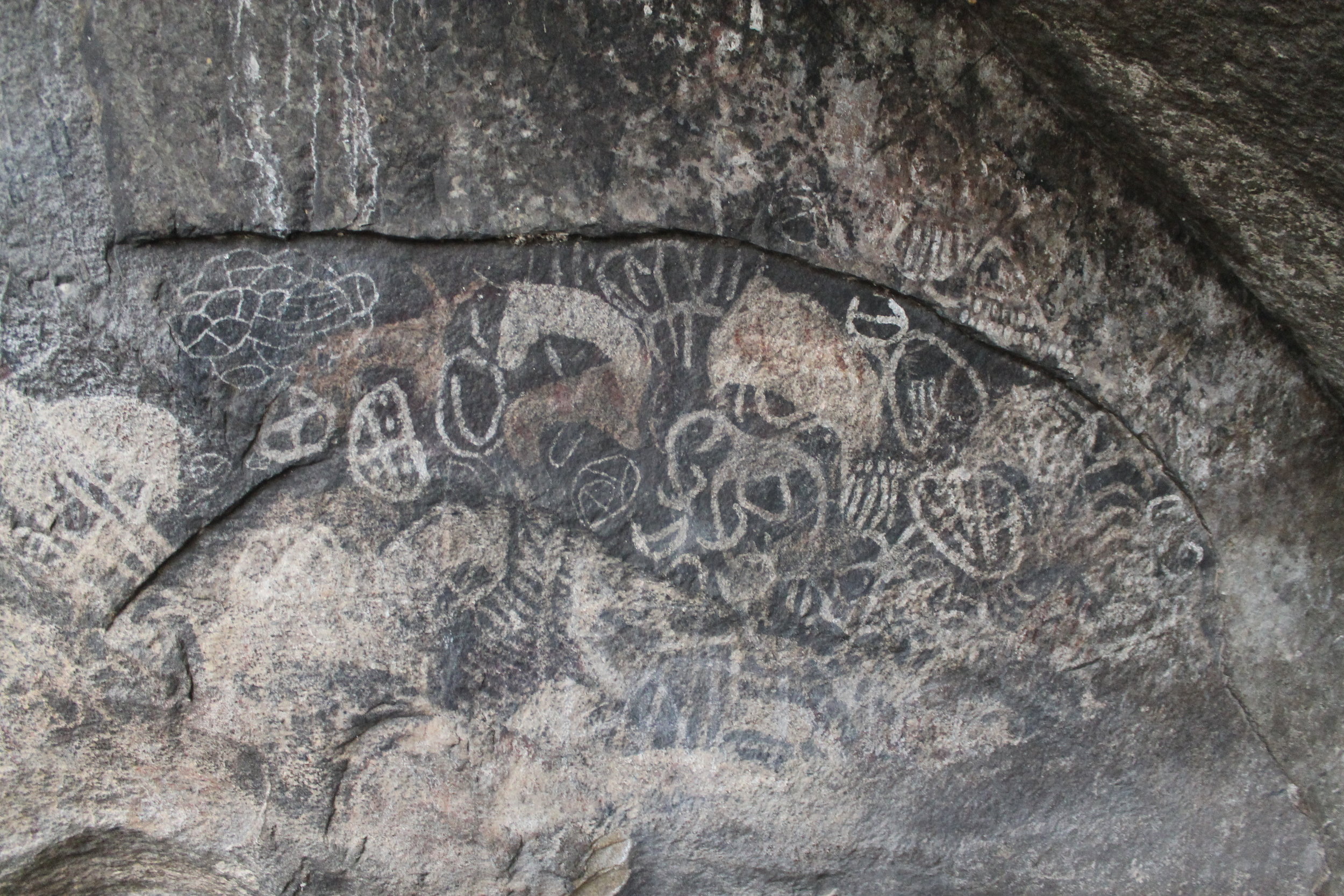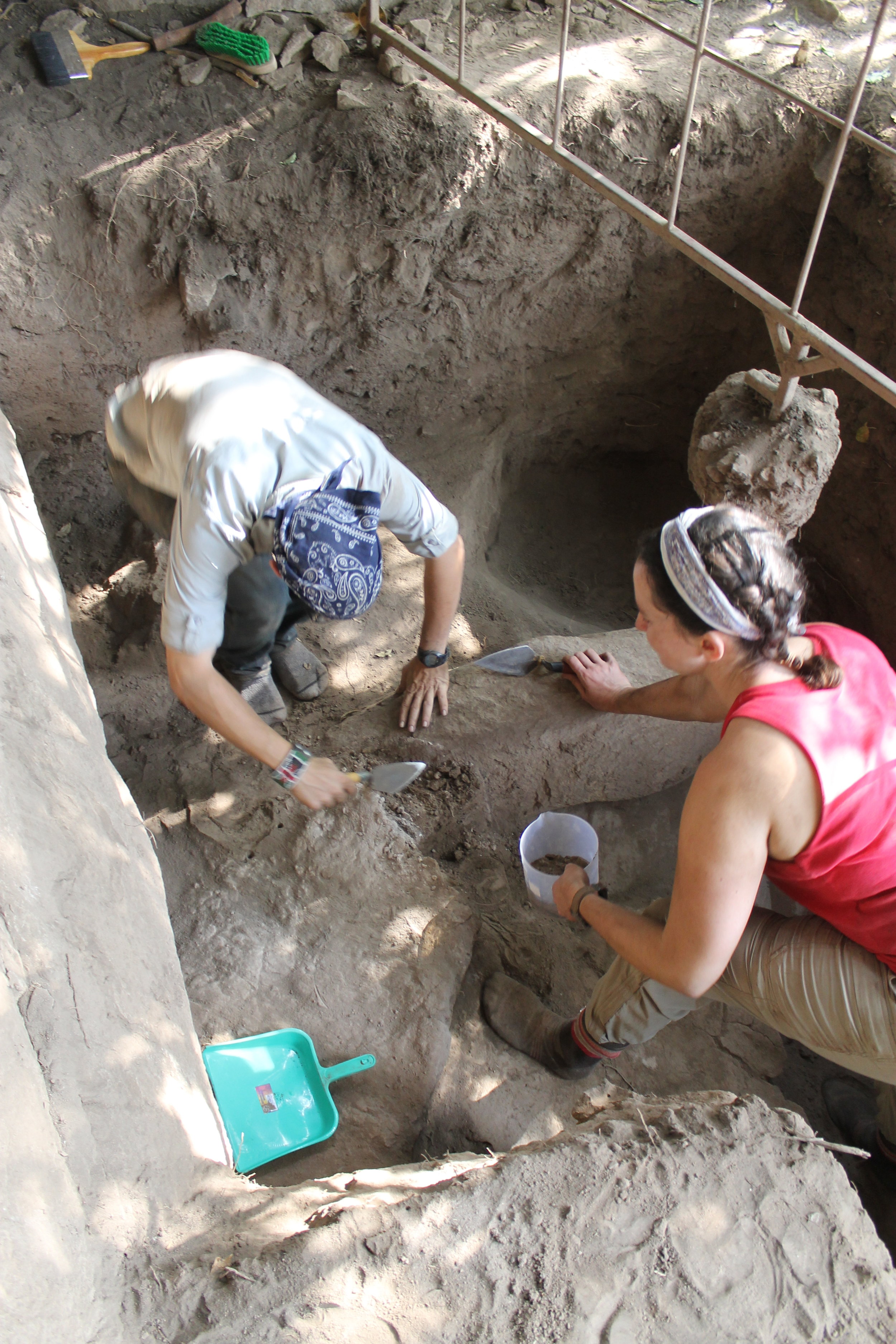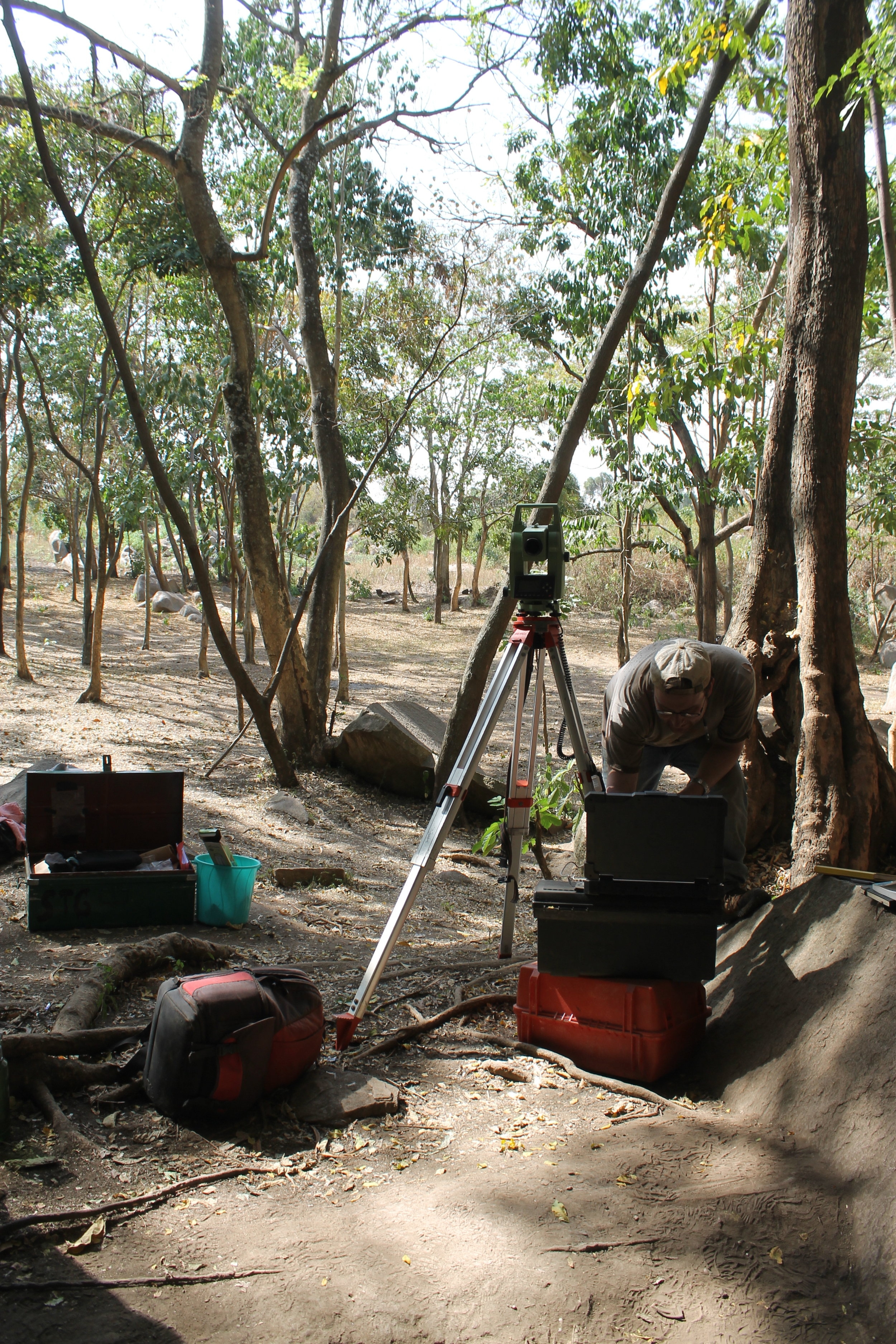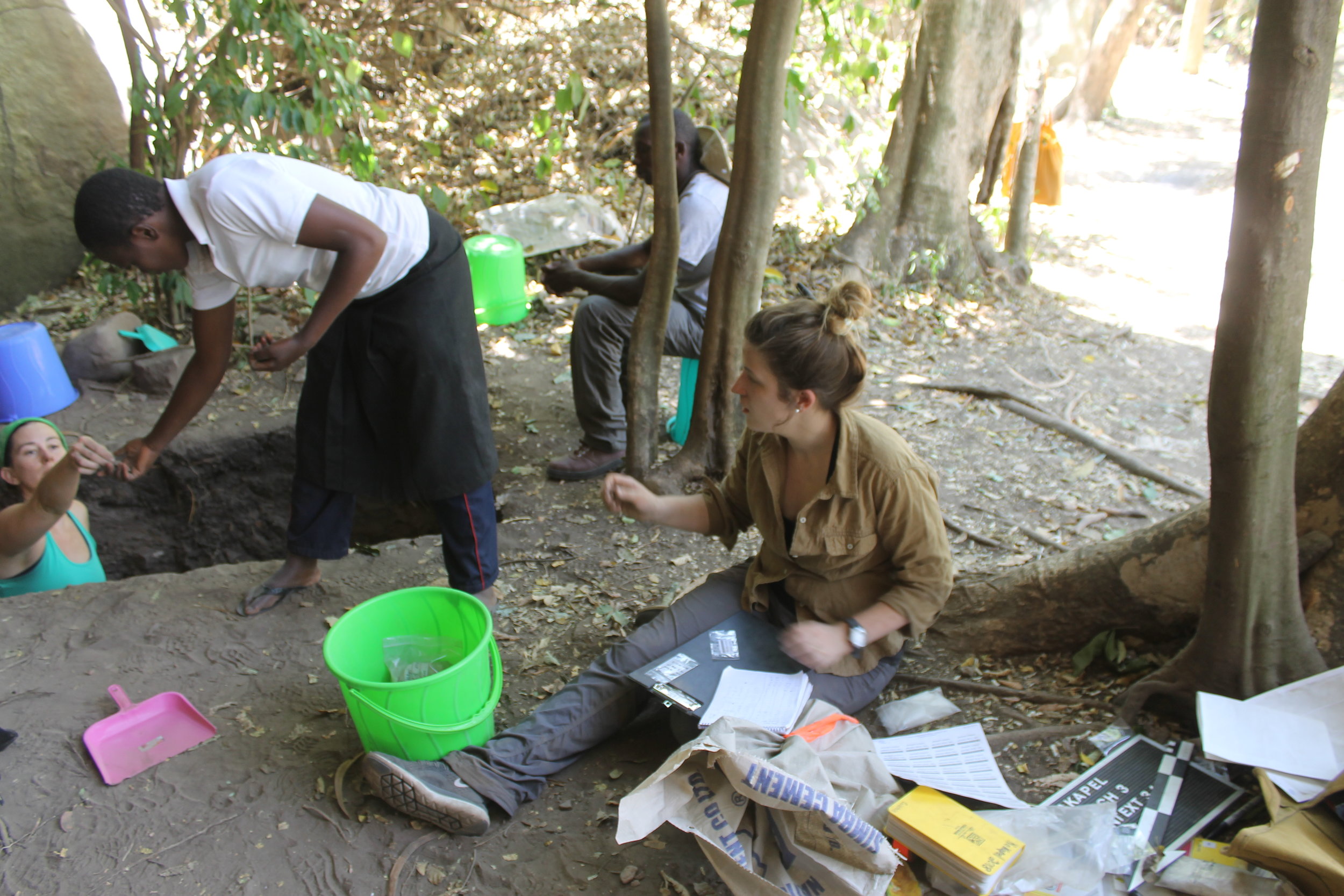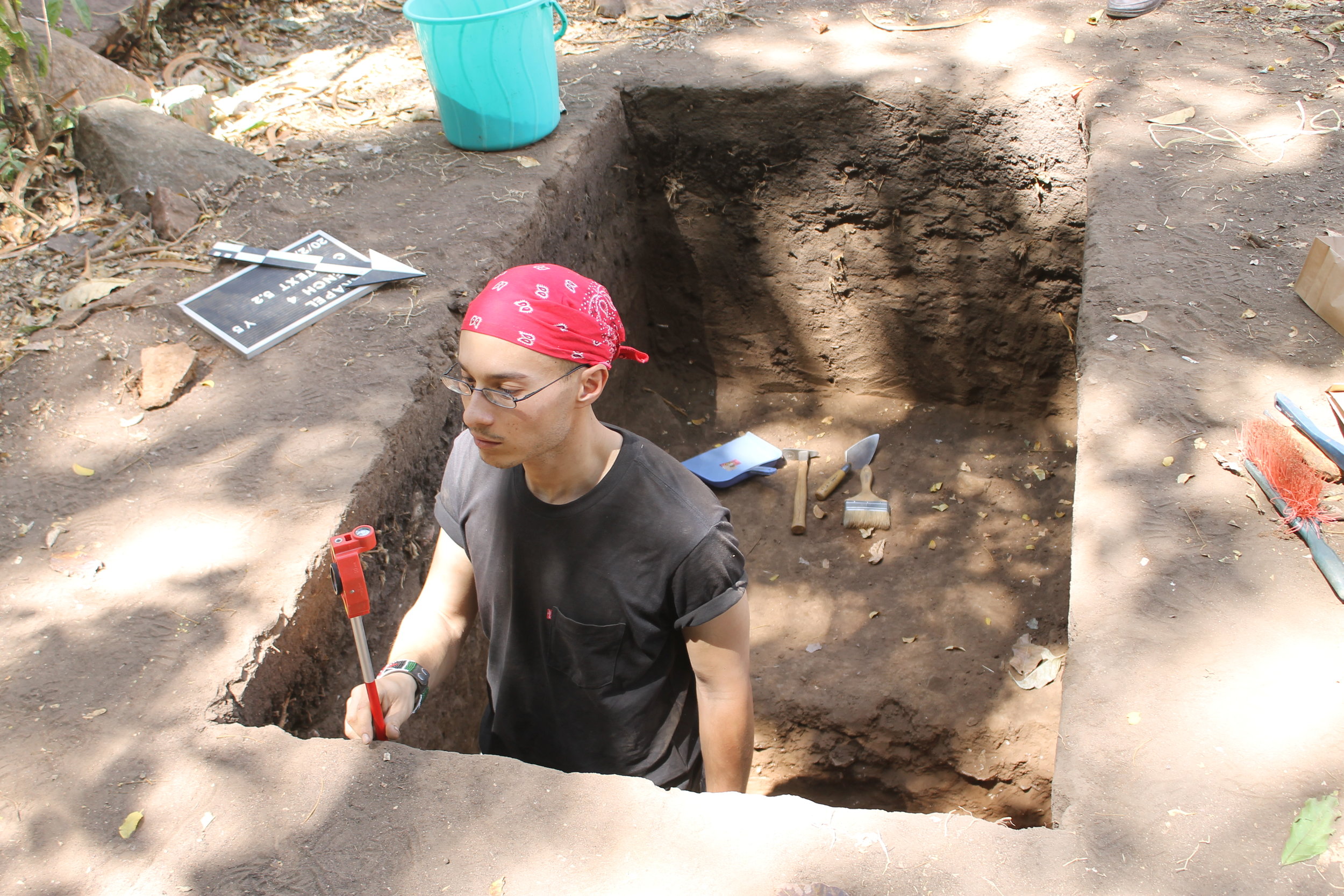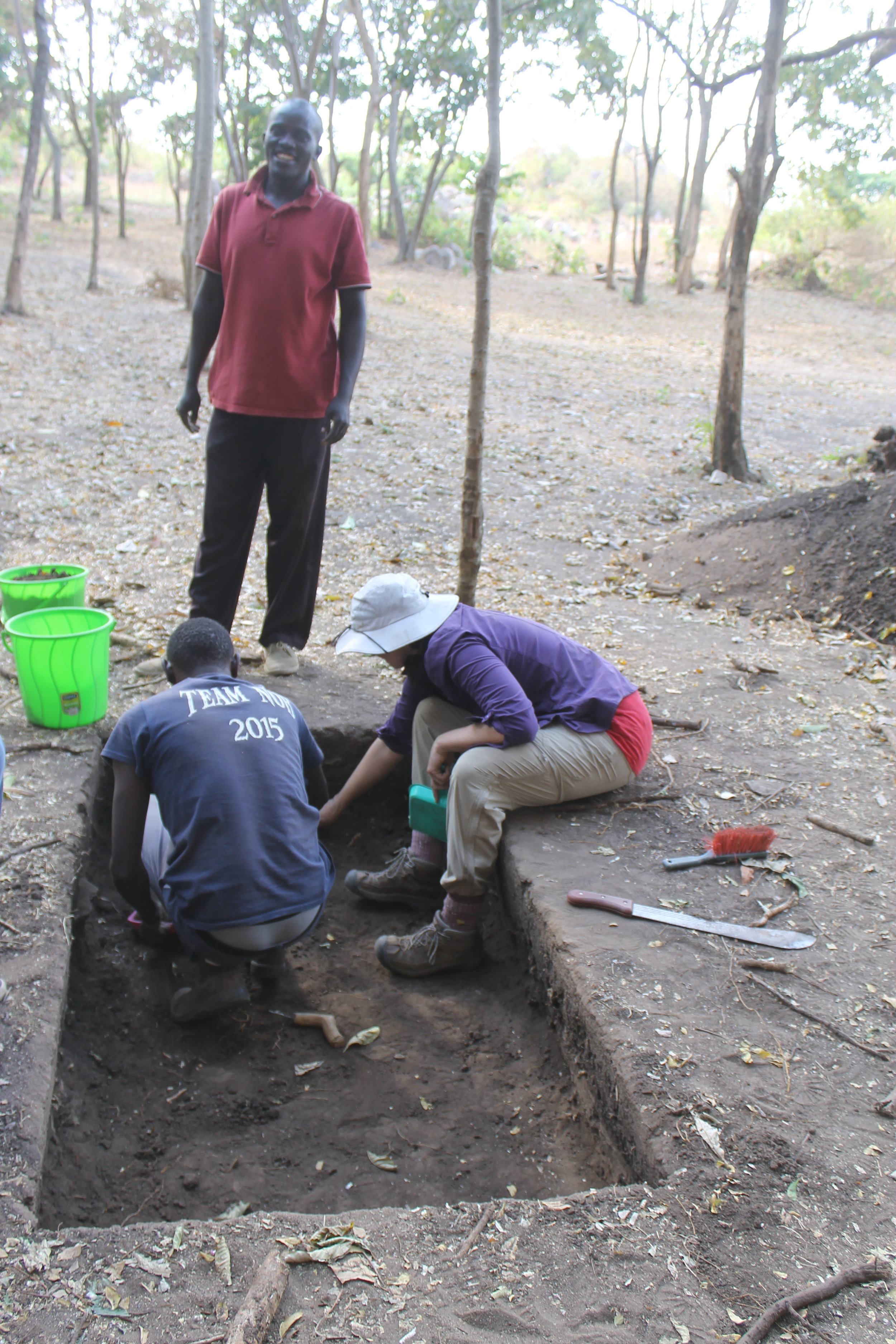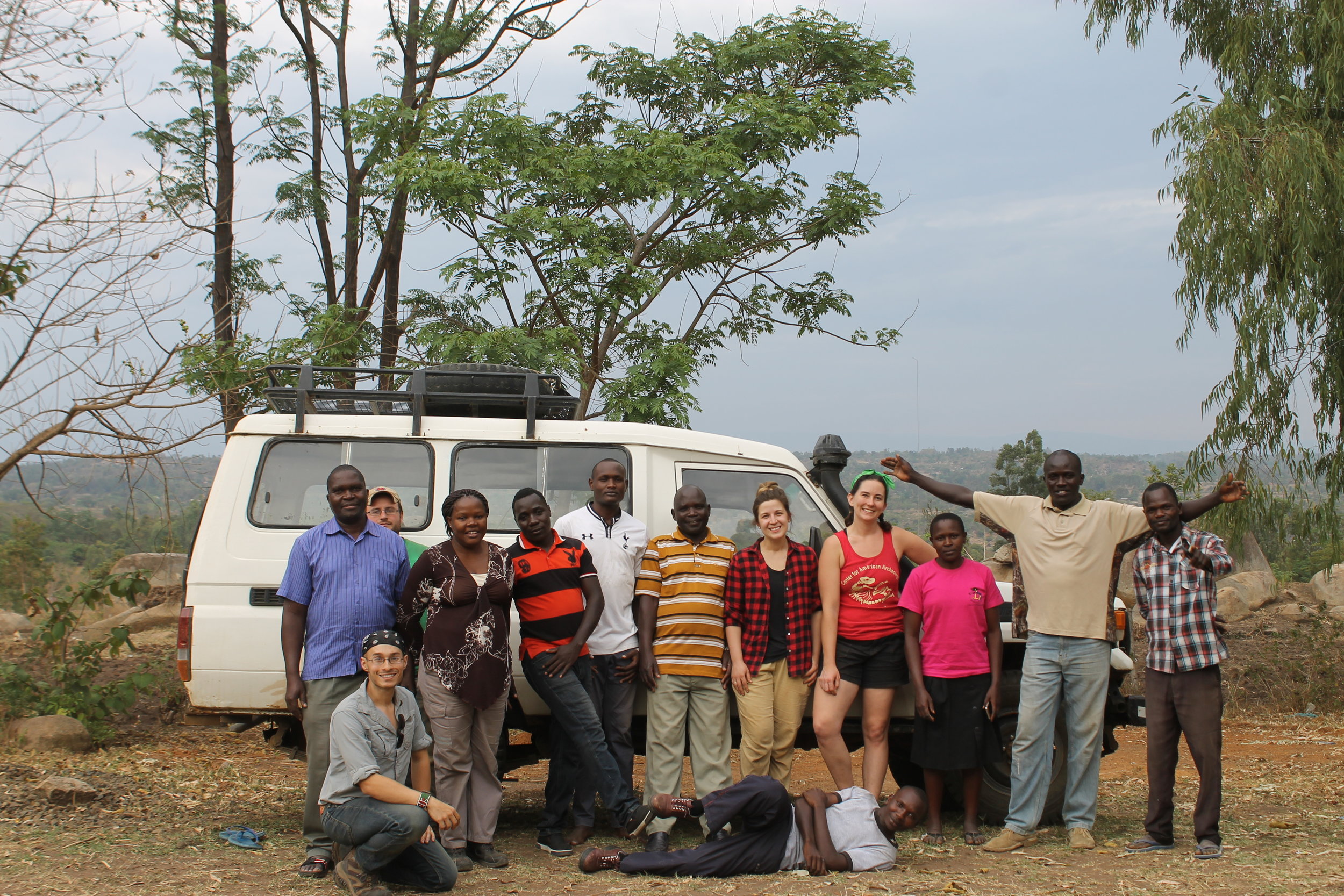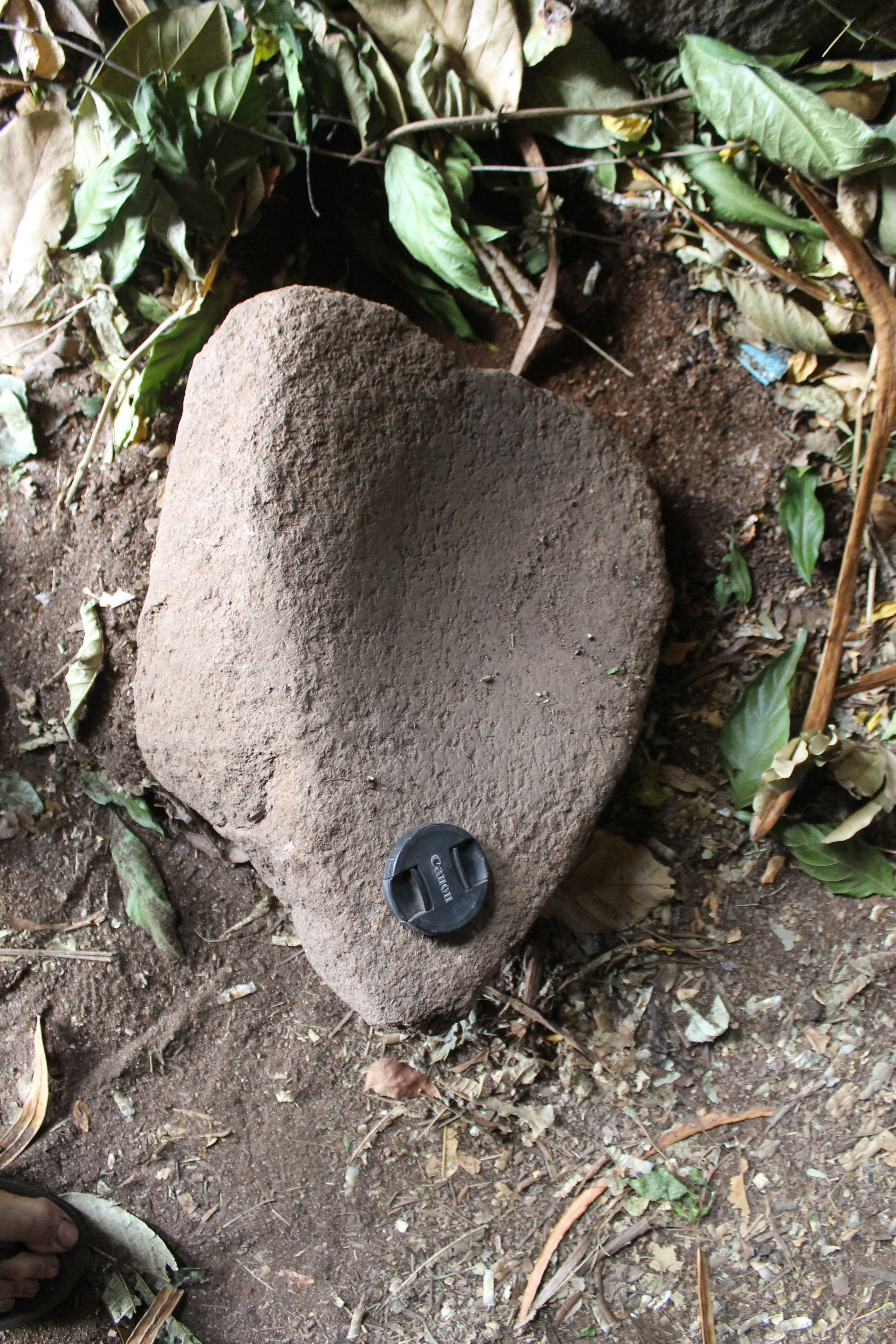
The first farmers in western Kenya
Searching for the earliest farmers in Kenya
This research project is a joint effort between the Max Planck Institute for the Science of Human History (Jena, Germany) and the National Museums of Kenya, Dept (NMK). of Archaeology to trace where, when, and how agricultural strategies first spread into eastern Africa. I am co-directing excavations along with Dr. Emmanuel Ndiema of the NMK near Mt. Elgon in western Kenya. Our first season of fieldwork was focused on Kakapel Rockshelter,one of the richest Iron Age sequences so far documented in Kenya.
Excavations are multi-disciplinary, involving high resolution spatial recording, paleobotanical recovery, geoarchaeology, zooarchaeology, ZooMS, isotopic studies, and bioarchaeological recovery. Using these innovative approaches, we are uniquely able to detect the arrival of domesticated plants and animals into Kenya and study the impacts of these new economies on local environments, population demography, human technology, and socio-cultural systems.
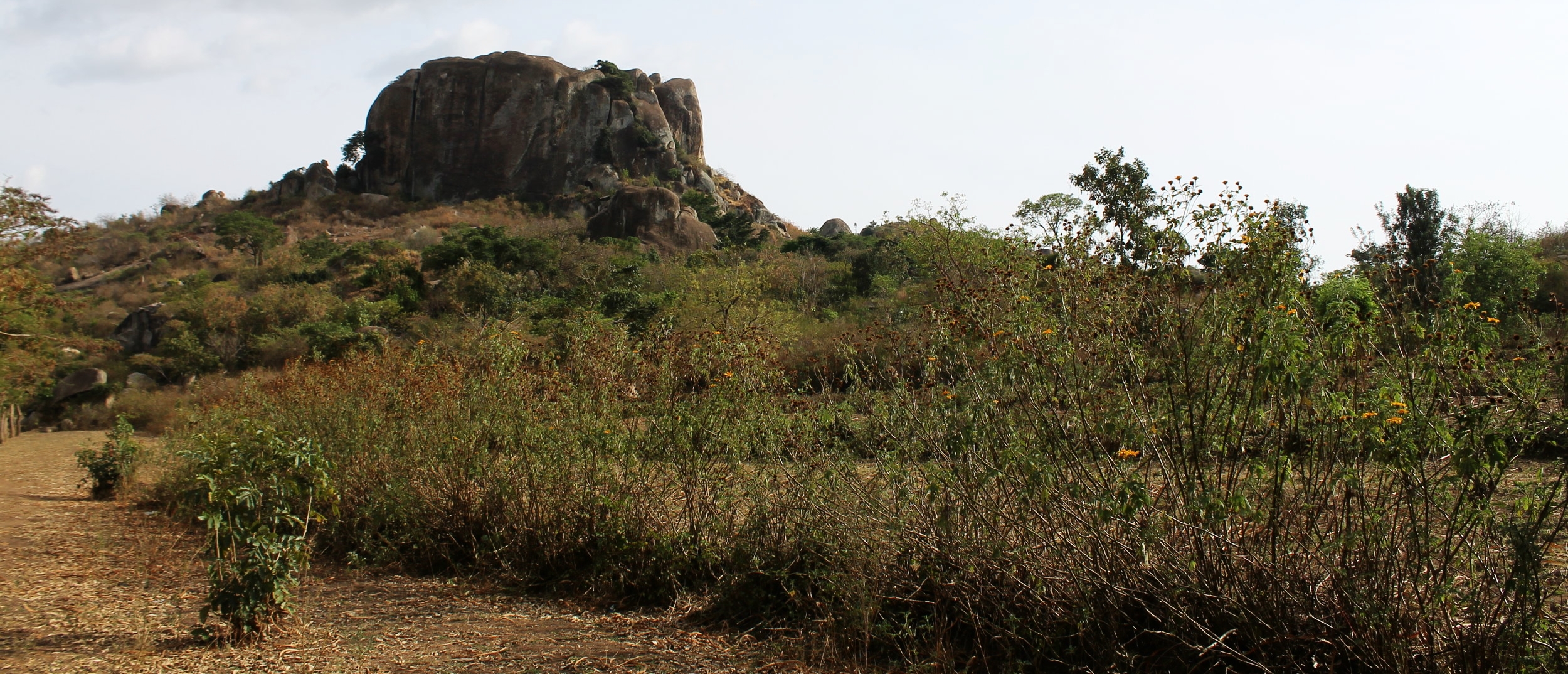
Kakapel, western Kenya
In 2018, we began this project with excavations at rockshelter site in western Kenya called Kakapel.
Located in the foot-hills of Mt. Elgon near the Kenya-Uganda border, Kakapel and the surrounding region is the perfect place to begin searching for the earliest farmers in eastern Africa. We know that the first florescence of farming lifeways in the region is associated with the "Urewe" culture. Urewe pottery is distinctly directed with linear incised and paneled motifs, and it is appears along with evidence for iron production and use, and the first domesticated crops in the region. The Urewe phenomenon is thought to mark the arrival of Bantu speaking populations from western Africa into the region. These pioneering farmers brought some crops (like pearl millet) with them from western Africa, however when they reached the Great Lakes region of eastern Africa around 2500 years ago they came into contact with other domesticated plants like sorghum and finger millet. They would have encountered new peoples too, particularly the "Kansyore" fisher foragers and the diverse mobile herders who lived around Lake Victoria. Culture and crop contacts helped propel Urewe producing peoples throughout the Lake Victoria Basin over the next several hundred years.
While we know that the Urewe were likely farmers, there has been very little solid evidence for what they grew or how they grew it. A notable exception is the study published by Giblin and Fuller (2011), reporting pearl and finger millets and sorghum in Rwanda between 1600-1400 years ago. This is an important data point, but we know the Urewe was around much earlier- so when did farming really begin? The region between Lake Victoria and Mt. Elgon sits within the Urewe sphere, but is much closer to the regions where sorghum and finger millet were likely domesticated (the Uganda mountains or southern Ethiopia) and has a rich history of agricultural use.
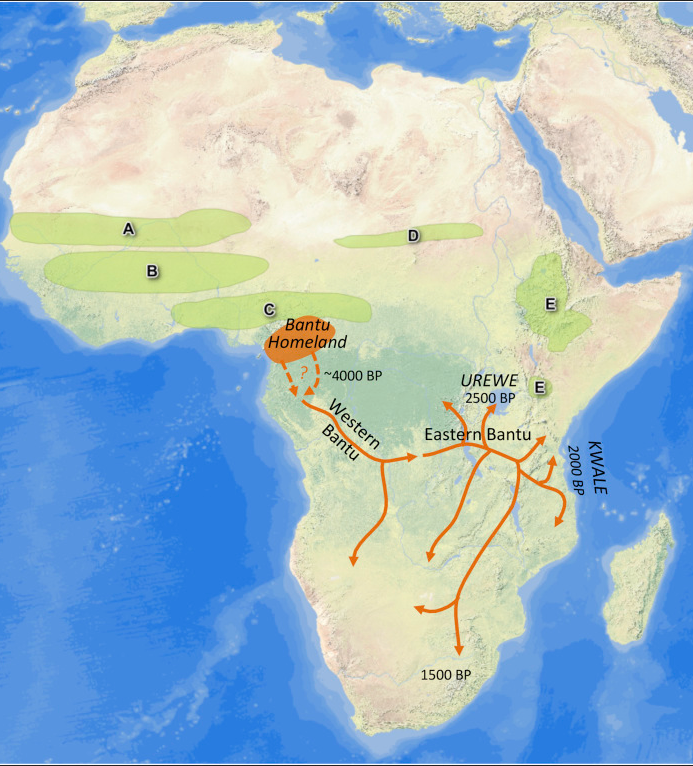
Current chronology
4500-2000 BP: Possible dates for the initial domestication and spread of finger millet - believed to be somewhere between Uganda and southern Ethiopia.
2500 BP: The origins of the "Urewe" culture of early iron using farmers around Lake Victoria. Associated with the spread of Bantu speaking populations into East Africa.
1700-1400 BP: Initial appearance of Urewe/iron in the western Lake Victoria Basin, overlaying Pastoral Neolithic strata.
1600-1000 BP: Dates for the earliest domesticated plants (pearl and finger millet, sorghum) in Rwanda (Giblin and Fuller 2011).
1200 BP: Possible date for early finger millet in Central Kenya (Ambrose 1984).

